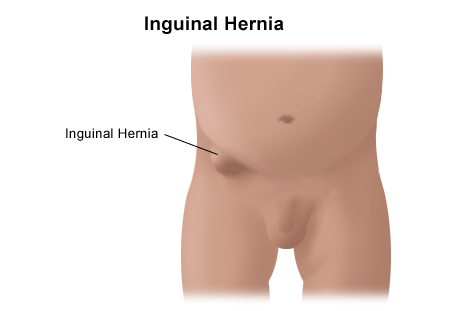Inguinal Hernia Repair
Find your care
Our renowned hernia team treats all types of hernias. To learn more about our hernia services at the Lichtenstein Hernia Institute, call 310-319-4080.

Inguinal hernias are the most common type of abdominal wall hernia and typically present with pain or a bulge in the groin. Commonly patients develop an inguinal hernia after heavy lifting or activity, coughing, or straining.
Inguinal hernias occur more frequently in men and may be confined to one side or be present on both (bilateral). Patients with bilateral hernias may have them appear together or there may be a gap of many years before the second one becomes apparent.
While small, asymptomatic inguinal hernias can be safely observed, the natural progression typically involves enlargement of an inguinal hernia and development of symptoms over time. There are a number of possible ways to repair an inguinal hernia. Long term outcome studies have proven tension free methods pioneered by the Lichtenstein Institute to be superior.
The repair of an inguinal hernia can be divided into open and laparoscopic procedures.
Treatment
In the open Lichtenstein operation, an incision approximately 6 to 8 cm long is made in the groin. The hernia is identified and its contents are reduced back into the abdomen. The abdominal wall is repaired with a lightweight piece of mesh. Careful nerve handling is imperative and all nerves are meticulously identified and addressed at the time of the initial operation to significantly decrease the incidence of chronic pain. This operation is performed under local anesthesia.
Outcomes of this technique have proven to be safe, cost-effective, reliable, and durable and it is the standard to which all other methods are compared. The laparoscopic repair of an inguinal hernia is an alternate standard method of hernia repair. Through three small incisions, the largest of which is 1 cm in size, the operation is then performed using a laparoscopic camera placing the mesh below the abdominal wall defect. This operation is performed under general anesthesia.
Both open and laparoscopic repairs can normally be performed as outpatient operations (the patient goes home on the day of surgery). The type of repair depends on the individual patient's presentation and preference. Both operations are offered at the Lichtenstein Amid Hernia Clinic with an informed discussion of the benefits and risks of each operation.